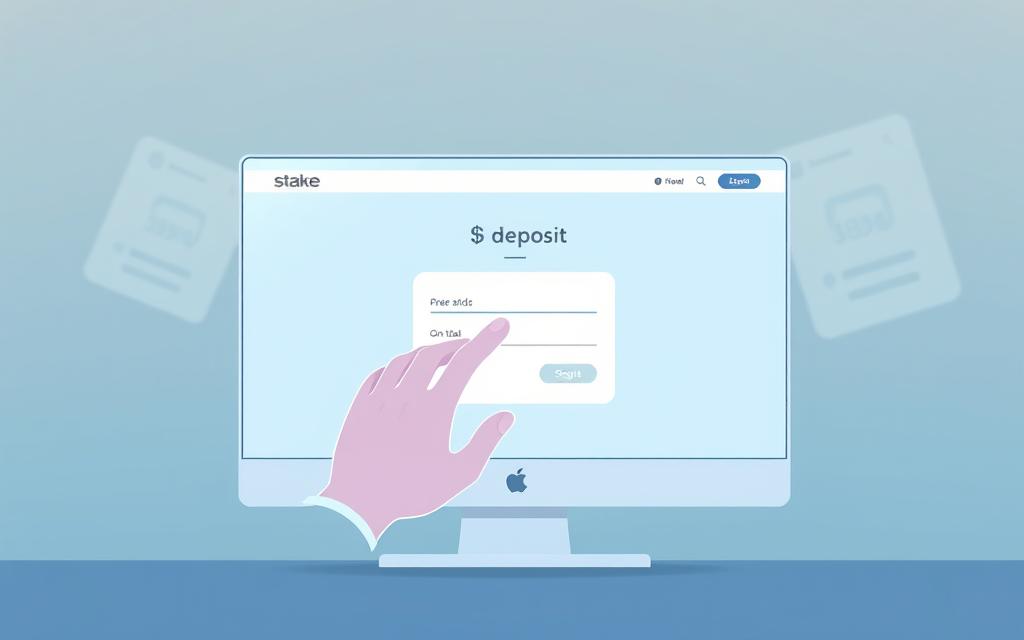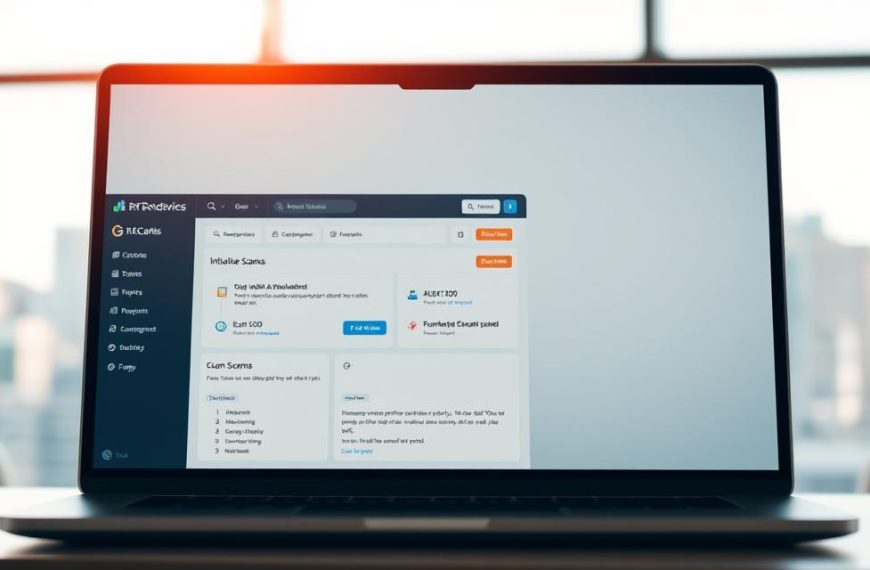Stake is a top choice for those into digital assets, supporting over 15 major cryptocurrencies. It’s easy to exchange Bitcoin or try out altcoins with this guide. It makes every step simple.
For beginners, blockchain deposits can seem daunting. But for experienced users, efficiency is key. Our guide is clear and secure, cutting through the jargon. Recent updates make transactions smoother, with real-time tracking for full transparency.
Stake is always open, so you can manage your digital funds anytime. Security is a top priority – every transaction is protected by multi-layer encryption. We’ll show you how to make the most of your deposits, for fun or for investment.
This guide is your key to navigating cryptocurrency transactions. It offers clear steps and visual aids to make complex tasks easy. Are you ready to improve your Stake experience? Let’s get started.
Understanding Cryptocurrency Deposits on Stake
Stake lets you deposit many cryptocurrencies easily. This guide explains how to transfer digital assets, their benefits, and which coins you can use. Discover why crypto is a top choice for gamers.
What Are Cryptocurrency Deposits?
Depositing cryptocurrencies means sending them from your wallet to Stake. These transactions use blockchain networks, not banks. For example, Bitcoin deposits need 1-15 confirmations, based on network traffic.
Benefits of Using Crypto on Stake
Using crypto on Stake has three main crypto gambling advantages:
- Ultra-low fees: Withdrawals cost as little as 0.00001571 BTC (about £0.50)
- Rapid processing: Most deposits appear in under 10 minutes
- Flexible limits: Start with just $5 – ideal for casual players
MoonPay makes it easy for new users to buy crypto with credit cards. It connects traditional finance with blockchain.
Supported Cryptocurrencies on Stake
Stake accepts 15+ coins, including popular ones and stablecoins. Here’s a list of main currencies:
| Cryptocurrency | Network | Avg. Confirmation Time |
|---|---|---|
| Bitcoin (BTC) | Bitcoin | 10-15 minutes |
| Ethereum (ETH) | ERC-20 | 3-5 minutes |
| Tether (USDT) | TRC-20 | 2-3 minutes |
| Litecoin (LTC) | Litecoin | 2-4 minutes |
Stake supports many currencies, making it easy to use your preferred ones. Always check network requirements before transferring – sending ETH via TRC-20, for instance, could result in lost funds.
Preparing Your Stake Account for Deposits
Before you deposit cryptocurrency, make sure your Stake account is ready. This means doing identity checks, setting up strong login details, and linking external wallets. These steps help avoid delays and keep your account safe.
Account Verification Requirements
Stake uses a KYC verification system with different levels. You need to provide:
- Level 1: A scan of your government-issued ID (like a passport or driving licence)
- Level 2: A recent utility bill or bank statement to confirm your address
- Level 3: Documents showing where your money comes from for big transactions
“Make sure your documents are clear and not blurry. Any issues with ID scans can lead to delays.”
Setting Up Two-Factor Authentication
Turning on 2FA security is a big step in protecting your account. Stake suggests using these apps:
- Download Authy or Google Authenticator on your phone
- Scan the QR code from Stake’s security settings
- Keep backup codes safe in a password manager
This whole process takes less than two minutes. It greatly lowers the risk of your account being hacked. Also, update your recovery email often to keep access.
Linking External Wallets (If Applicable)
If you use external wallet integration, Stake has easy steps to follow:
- Go to ‘Wallet Connections’ in your account settings
- Pick the blockchain network you want to connect
- Double-check the deposit addresses carefully
Start with small test transfers before moving more money. Pay extra attention to network-specific memo tags, like for XRP or XLM.
How to Deposit Crypto on Stake: Step-by-Step Process
Putting cryptocurrency into your Stake account is easy. This guide shows you how to do it in five simple steps. You’ll learn how to get to your wallet, find your deposit address, and confirm your transaction.
1. Accessing Your Stake Wallet
First, log into your Stake account with your login details. Then, go to the ‘Wallet’ section in the dashboard. Look for the green ‘Deposit’ button next to your chosen cryptocurrency.
2. Generating a Deposit Address
Choose your cryptocurrency, like Bitcoin or Ethereum. Stake will then give you a unique deposit address. You can copy it manually or scan a QR code.
Important: Make sure the network type matches between Stake and your wallet.
3. Initiating the Transfer from Your External Wallet
Open your external wallet app. Here’s what to do:
- Paste or scan the Stake deposit address
- Enter the amount you want to transfer
- Check the network fees (gas fees vary)
For Ethereum, expect a fee of about 0.00067447 ETH. Always double-check before sending – blockchain transactions can’t be undone.
4. Confirming the Transaction on Blockchain
After sending, check the transaction’s progress with a blockchain explorer. Here are some average times:
| Cryptocurrency | Average Confirmation Time | Network Fee Range |
|---|---|---|
| Bitcoin (BTC) | 10-30 minutes | $1.50-$4.00 |
| Ethereum (ETH) | 1-5 minutes | $2.00-$8.00 |
| Litecoin (LTC) | 2-7 minutes | $0.10-$0.30 |
Most deposits are confirmed in 15 minutes. But, network congestion can sometimes slow things down.
5. Tracking Your Deposit in Stake
Go to ‘Transaction History’ in your Stake account to see your deposit status. The system updates automatically when:
- The blockchain confirms your transaction
- Funds reach the minimum required confirmations
If your deposit doesn’t show up in 30 minutes, contact Stake’s support with your transaction hash for help.
Troubleshooting Common Deposit Issues
Crypto deposits can sometimes run into problems. Knowing how to fix these issues quickly helps keep your Stake experience smooth. Here, we tackle three common problems and offer solutions.
Delayed or Missing Transactions
Stake deposit delays often stem from blockchain confirmations or exchange processing times. If your transaction is late:
- Check the transaction status on a blockchain explorer using your TXID
- Verify you’ve met the minimum deposit amount
- Contact Stake support with complete transaction details
Delays can be due to high fees causing backlogs, not always platform errors.
Incorrect Deposit Address Errors
Wrong addresses are a major cause of crypto transaction errors. Stake warns:
“We cannot recover funds sent to invalid or incompatible wallet addresses.”
To avoid losses:
- Always copy-paste addresses instead of typing them
- Make sure the address network matches your withdrawal platform
- Test new deposit addresses with a small transaction first
Network Congestion and Fee Adjustments
During busy times, like Bitcoin’s fee hikes, blockchain fee management is key. Here’s what to do:
- Keep an eye on real-time fee trackers like mempool.space
- Use replace-by-fee (RBF) options where available
- Send transactions when there’s less activity
Lower fees mean longer waits, while higher fees speed up processing. Choose based on how urgent it is.
Conclusion
Stake makes cryptocurrency transactions fast and secure. Most users get their crypto deposits in just five minutes. First-time withdrawals might take up to 72 hours for extra security, like Bitstamp and Coinbase.
Stake protects your digital assets with two-factor authentication and account verification. This adds extra security for your crypto. It supports seven major cryptocurrencies, including Bitcoin and Ethereum.
The platform recently added Polygon and Avalanche. This is detailed in Stake’s updated crypto guide. It shows Stake keeps up with blockchain trends. It also has low fees and fast processing times.
New users might want to use MoonPay for their first crypto transactions. It’s good for small amounts. Experienced traders should keep records of wallet addresses and blockchain codes. This helps solve any delays caused by network issues or fees.
Stake is a good choice for both new and experienced users. It balances ease of use with security. The platform regularly updates its services to meet Web3 needs. It offers fast transactions and strong security, meeting today’s crypto standards.













